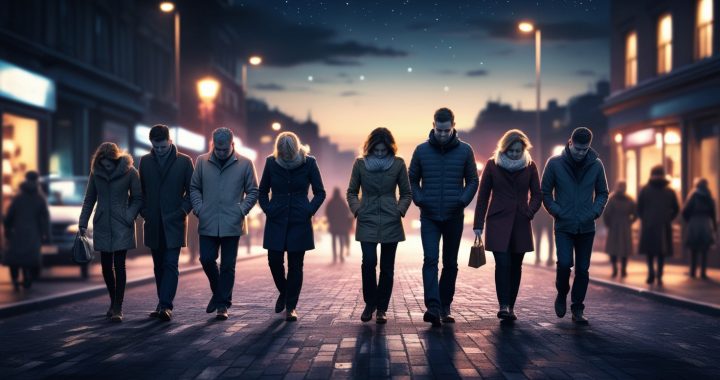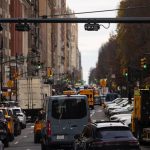Daylight Saving Time (DST) has been part of American life for over a century, first introduced as a temporary measure during World War I to conserve energy by extending daylight hours into the evening. The concept aimed to reduce the demand for artificial lighting, thus saving fuel and resources needed for the war effort. While DST was discontinued after the war, it was reintroduced during World War II and later became a more permanent fixture in the U.S. following the 1966 Uniform Time Act, which standardized the start and end dates for DST across the country.
In 2007, the United States extended the duration of DST as part of the Energy Policy Act of 2005, adding four additional weeks to the schedule. This adjustment, moving DST’s start to the second Sunday in March and end to the first Sunday in November, was intended to maximize daylight during waking hours, thereby further reducing the use of electricity in homes and businesses. The policy aimed at potential energy savings, but it also carried additional social and economic impacts—some of which have been debated and scrutinized in recent years.
However, while DST was initially promoted for its energy-saving potential, its effectiveness in achieving these goals has been questioned, particularly in regions where daylight hours have a more significant effect on lifestyle and business. As the economy and technology have evolved, the original motivations for DST may not hold the same relevance, prompting discussions about whether the practice benefits modern American society.
Impact on Consumer Behavior and Retail Sales
The time change, particularly during the fall and winter months, directly affects consumer behavior. With sunset occurring as early as 4:30 PM, consumers tend to avoid shopping trips in the dark, reducing foot traffic in malls, shops, and other commercial areas. This decline in activity is linked to both a natural inclination to stay indoors after dark and security concerns. As a result, New York businesses experience decreased customer flow and a significant drop in evening sales. The economic loss for retailers, especially those relying on evening hours for revenue, is substantial and leads to lower profits across various sectors.
Impact on Street Vendors
The time change also has a significant impact on street vendors, or hawkers, who rely on the constant flow of people on the streets to maintain their daily income. As it gets darker earlier, many people prefer to head home sooner and avoid shopping outdoors in the late afternoon, which drastically reduces the sales for street vendors. This phenomenon is especially detrimental to those operating in commercial and high-traffic areas of New York City. The reduction in potential customers not only limits their earnings but also affects the local economy, as these vendors are often an integral part of the city’s commercial ecosystem.
Consequences for the Tourism and Hospitality Sectors
New York, known for its dynamic nightlife and entertainment, relies heavily on tourism. The shortened daylight hours discourage visitors from engaging in evening activities, such as sightseeing, dining out, and attending shows, thus impacting the tourism sector. Restaurants, theaters, and bars see reduced customer numbers as people avoid being out after dark. Additionally, fewer hours of natural light mean tourists have less time to explore safely, which lowers their overall spending. The diminished vibrancy in these sectors impacts not only individual businesses but also reduces revenue for the entire city, affecting hotel bookings and event participation.
Productivity and Employee Well-Being
The early onset of darkness has been linked to lower productivity and a decline in worker well-being. People often feel tired earlier in the day due to reduced daylight, leading to lower energy levels and motivation. Studies have shown that decreased natural light exposure can also affect sleep patterns, reducing the quality of rest and impacting employee alertness. This change may lead to reduced productivity levels, particularly in industries requiring high energy and customer interaction. As a result, companies could face productivity losses, while employees may experience a decline in well-being due to increased fatigue and seasonal affective disorder (SAD) symptoms.
Public Transportation and Traffic Flow
New York’s public transportation system and road networks are also impacted by the time change. With sunset happening earlier, public transportation systems face an increase in passengers in the afternoon, as people leave work or start evening activities before it gets dark. This spike in transit use during a shorter time window can lead to overcrowding and affect service efficiency. Additionally, the early darkness may contribute to higher traffic accident rates, as driving in low-light conditions can lead to reduced visibility and reaction time. Consequently, both the public transit and road systems experience increased strain and potential safety issues during the darker winter months.
Economic Adaptation Measures by Businesses
In response to the time change, some businesses have adjusted their hours to encourage evening consumer activity. For example, many stores offer discounts or special events earlier in the day to attract customers before sunset. Certain sectors have also increased their use of digital marketing to drive online sales as an alternative to in-store visits. However, these measures have not fully compensated for the economic loss caused by decreased foot traffic. While businesses are adapting, the structural limitations imposed by the time change prevent them from fully recovering the economic benefits of evening commerce, especially in colder months when people are even less inclined to go out after dark.
Conclusion
The time change in the United States has a clear economic impact on New York, a city dependent on constant consumption and mobility. Reduced daylight hours in the evening not only affect sales but also influence safety perceptions, consumer willingness to shop, and sector profitability. Although some businesses have implemented adaptive measures, it is evident that the time change presents significant challenges for the local economy, especially for sectors reliant on nighttime activity and discretionary spending.
Given the current context, the government should consider ending this measure, as it no longer meets citizens’ needs or habits. In this country, many people tend to wake up later and go to bed after midnight. Shortening evening daylight hours affects rest and limits productive activities, as people have less time in the afternoon for shopping or recreational activities in natural light. This measure not only negatively impacts the economy but also the health and well-being of citizens, as it shortens the time they can dedicate to rest and a proper sleep routine.






